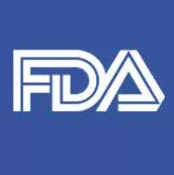Report Details Most Common Violations at FDA-regulated Food Facilities

Source: Food Safety News
Food standard violations at 874 facilities around the country in FY 2018 fell into one of five categories, according to a company that helps other businesses with U.S. Food and Drug Administration (FDA) compliance. Registrar Corp. says the latest round of “Inspection Observation Data” from FDA shows a variety of food safety issues.
But first, Registrar had to separate the wheat from the chaff by sifting out information about food from other FDA-regulated categories that include biologics, drugs, devices, human tissue for transplantation, veterinary medicine, and others.
All this data on aggravating violations documented in FDA inspections from October 2017 through September 2018 was recently released on spreadsheets. They track inspection and enforcement activity by FDA’s Office of Regulatory Affairs (ORA). According to FDA, investigators from the ORA can, during an inspection, observe conditions they deem to be objectionable. These observations, are listed on an “FDA Form 483” when, in an investigator’s judgment, the observed conditions or practices indicate that an FDA-regulated product may be in violation of FDA’s requirements.
Top Five Food Facility Violations
From the spreadsheet data, Register Corp. has found the top five food facility violations during the federal fiscal year 2018:
Sanitation Monitoring – FDA cited 188 of the 874 food facilities, which is 21.5 percent, for not properly monitoring sanitation conditions and practices with sufficient frequency. Facilities are required to monitor aspects such as the safety of the water coming into contact with food or food contact surfaces, prevention of cross-contamination and maintenance of hygiene facilities.
Pest Control – FDA cited 183 food facilities, which is 20.9, for not correctly excluding pests from potentially contaminating food.
Manufacturing, Processing, Packing, and Holding Controls – FDA cited 175 establishments, which is 20 percent, for not implementing proper controls to mitigate the risks of food hazards, such as growth or microorganisms, allergen cross-contact and contamination of food.
Looking for quick answers on food safety topics?
Try Ask FSM, our new smart AI search tool.
Ask FSM →
Sanitary Operations and Plant-Maintenance – FDA cited 167 facilities, which is 19 percent, for either not maintaining cleanliness of their facility or failing to keep them in good repair.
Personnel – And FDA issued citations to 161 food facilities, which is 18 percent, for failing to take reasonable measures and precautions related to staff. Employees working in direct contact with food who fail to adhere to hygiene cleanliness requirements are included in this category.
Spreadsheets summarizing the areas of regulation mentioned on FDA’s system-generated 483s are available by fiscal year on the menu links on the agency’s website.
FDA says the spreadsheets are not a comprehensive listing of all inspectional observations, but they do represent the area of regulation and the number of times it was cited as an observation on an FDA Form 483 during inspections conducted by FDA and its representatives. Inspectional observations reflect data pulled from FDA’s electronic inspection tools. These tools are used to generate an FDA Form 483 when necessary. Not all FDA Form 483s are made by these tools, as some 483s are manually prepared. Observations have been broken out by Product or Program Area on separate tabs of the spreadsheet.
A Registrar Corp. spokesman said the 2018 inspection results show the FDA is also “actively enforcing” the Food Safety Modernization Act’s rules for the Foreign Supplier Verification Program (FSVP) and Preventive Controls. “With the compliance deadlines for both rules having passed, it’s prudent for industry to ensure they are fully compliant,” he said. “In most cases, FDA will not give a U.S. facility notice before showing up for a routine inspection, during which the Agency will likely inspect for FSMA compliance.”
Most food importers have been required to develop FSVP’s since March 19, 2018.
“While no individual violation of the FDA Preventive Controls rules made it to the top of the list, violations of Preventive Controls requirements in FY 2018 total 396 when combined,” according to the Registrar spokesman.
Preventive control issues included not having a Hazard Analysis and Risk-Based Preventive Controls (HARPC) Plan; not identifying a hazard that requires a preventive control in a HARPC Plan; not utilizing a Preventive Controls Qualified Individual (PCQI) to prepare or oversee a HARPC Plan; not implementing adequate procedures for monitoring sanitation or allergen controls, and more.
Sign up for Food Safety Magazine’s bi-weekly emails!
Subscribe to our podcast: Food Safety Matters!








